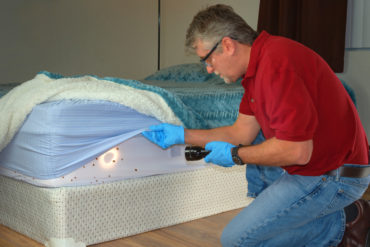

Bed bugs are small, flat, reddish-brown parasitic insects that feed on human and animal blood every five to ten days. Their small size (about 1mm-7mm in length) and flat bodies enable them to fit easily in cracks and crevices of walls, windows, floors, furniture, and on beds, making it hard to spot them. They are not known to spread diseases to humans, but some people can be allergic to their bites. They can be transferred from an infested site to a new home by travelling on boxes, luggage, clothing, furniture, and bedding.
Getting rid of bed bugs can take time and require a lot of effort, especially if you are dealing with an infestation. Here are simple things you can do to reduce bed bug infestation in your home.
Bed Bugs can hide well in piled-up items such as toys, books, and electronics. The first thing to do is eliminate such items against walls and dispose of those you no longer need. You can also remove them from the room and place them in another room or outside to be treated. Preferably, take these items outside since transferring bed bugs to another area that is not infested is easy.
Instead of throwing away infested garments, you can thoroughly wash them or treat them with a non-staining insecticide. You can also wash them in hot water (60 degrees centigrade) or put them in a hot dryer for at least 30 minutes. Do not let your beddings touch the floor, as you can transfer the bedbugs to the floor.
Encases your mattress and box springs with a protective cover to get rid of the hiding spots. The light color of the encasement makes it easier to spot bedbugs. Ensure that you purchase high-quality encasement that will resist tearing and regularly check for holes that can be hiding spots for bed bugs. Alternatively, you can buy a cover that has been pre-treated with pesticide to control bed bugs.
Bed bugs can also be hiding inside the drawers of the desks and dressers in your house. Remove these drawers and spray them. Remember to turn them over to inspect and clean all hiding spots.
After inspecting all areas with bedbugs, vacuum the cracks and crevices on the furniture, walls, carpets, drawers, bed stands, rails, and edges of the bed. This helps pull out the bed bugs and makes it easy to apply insecticides. Make sure to empty the vacuum or bag immediately and dispose it outside in a sealed container or bag.
Bed bugs can thrive in any environment as long as they have access to blood. By identifying their hiding places, you can easily get rid of them before they start to reproduce.
